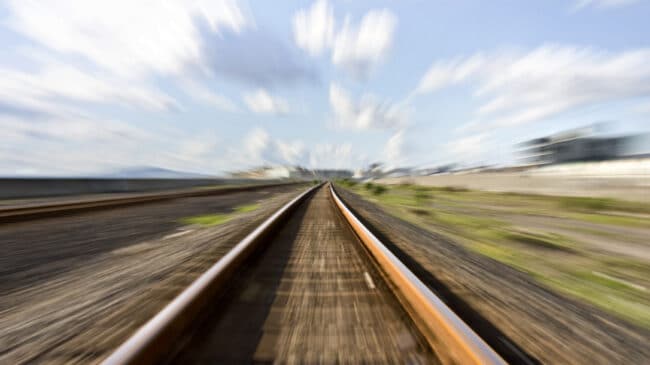Advocates of high-speed rail projects sometimes argue that high-speed rail would help reduce emissions and fight climate change. However, the construction timelines, costs, and travel patterns of typical high-speed rail projects make that unlikely in the United States.
In terms of timelines, the obvious example in the U.S. is California’s high-speed rail system, which was approved by the state’s voters in 2008. As of this writing in 2021, there’s no sign of the trains. The latest estimates suggest that a small section of the rail system will not start until 2028 at the earliest. While some rail proponents cite China’s speedy completion of high-speed rail projects as a model to follow, that nation does not respect property and labor rights. Thus, China’s rail construction costs and timelines aren’t comparable to those in the United States.
In a 2010 University of California—Berkeley study, professors Mikhail Chester and Arpad Horvath estimated that the entire California high-speed rail project would generate 9.7 million metric tons of carbon dioxide during construction. They also estimated that it would take high-speed rail 71 years of operation at medium occupancy to offset its own construction-related greenhouse-gas emissions.
Building high-speed rail systems require steel and concrete, the manufacturing of which typically generates greenhouse gases. Trucks, bulldozers, and other construction site equipment also consume energy. Thus, during their long construction phases, high-speed rail projects add greenhouse gases. Adding lanes to existing highways also generates greenhouse gases, but to the extent that recycled asphalt is used for road paving climate impacts can be somewhat reduced.
There are far quicker, more cost-effective ways to reduce greenhouse gas emissions than high-speed rail. By the time high-speed rail projects commence service, more cars will be fully electric, so future high-speed rail systems would be replacing fewer gasoline-powered automobile trips than they would’ve been replacing decades ago. California, for example, plans to terminate the sales of gasoline-powered cars by 2035. Similar bans are being implemented in Canada and the United Kingdom. Given the California rail project’s delays and carbon reductions being achieved by new technology, like electric vehicles, it is possible that, if built, the rail system will never pay back the carbon investment required to build it.
High-speed rail projects are also very costly. California’s high-speed rail project, which was estimated to cost $33 billion when presented to voters in 2008, is now estimated to eventually cost about $100 billion to eventually connect San Francisco to Anaheim. If the California high-speed rail is completed on its current budget, the cost per mile would be approximately $192 million a mile. This compares to about $10 million for a new mile of an interstate highway or $4 million per mile to widen an existing highway.
Costs are high in other parts of the country as well. The Texas project connecting Dallas and Houston is estimated to cost $30 billion. A 2012 plan to convert Amtrak’s Northeast corridor to true high-speed service (220 miles per hour) said it would cost $118 billion.
High-speed rail’s ridership is also uncertain at best, in part, because high-speed rail rarely serves a traveler’s point of origin and destination directly. Rail typically requires connecting services. If these connecting services are inconvenient, many potential rail riders may choose to drive or choose a mode of transportation that offers more convenience or a shorter travel time.
High-speed rail best connects riders in large central cities. However, most U.S. cities are dispersed, with the majority of the population living in suburbs. Thus, in most major urban areas that would consider high-speed rail, suburban customers would either need to take another form of mass transit or drive to get the high-speed rail station, further reducing any environmental benefits of the high-speed rail system itself.
Currently, and in the short-to-mid-term future, travel, work, and leisure habits are going to be changed by the COVID-19 pandemic. When the pandemic is behind us, there may be permanent changes in working-from-home, commuting patterns, and a permanent reduction in intercity travel. As such, there are numerous reasons for taxpayers and policymakers to be wary of high-speed rail’s potential to fight climate change or replace automobile and air travel in cost-effective ways.

